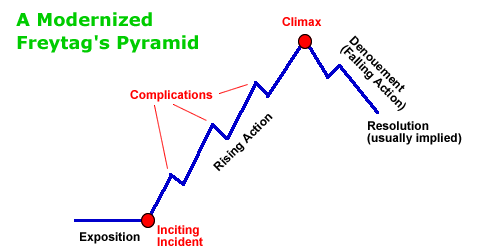Title of Work and its Form: The short films hosted on wafflepwn’s YouTube channel
Author: wafflepwn
Date of Work: 2009 - present
Where the Work Can Be Found: The films can be found on the wafflepwn YouTube channel.
Element of Craft We’re Stealing: Structure
Discussion:
It all started with concerned parents who shut off the World of Warcraft account when their son, Stephen, needed to be disciplined. Stephen did not take the punishment with very much grace:
Nor did Stephen appreciate the car his parents gave him for his sixteenth birthday:
And Stephen certainly did not endure the pain of his first tattoo with much grace:
Over the course of two dozen videos, Stephen has demonstrated his lack of impulse control, his adolescent sexual confusion and his inability to understand the effect his behavior has on others. Why are these videos something more than simple digital artifacts of sibling rivalry? The creators (ostensibly Stephen and his brother Jack) have actually constructed effective short films that trade on classic themes.
First, let’s look at the structure. Jack is very good at releasing the exposition the audience needs and he does so in a graceful manner. Here’s an example. Jack begins “Greatest freak out ever 4” by staring into the camera and stating,
Okay, my parents aren’t home and Stephen’s playing my Dad’s guitar, so I’m going to mess with him a little, okay?
This is all the setup we need. What are the compelling points of drama involved in the film?
- Sibling rivalry. Even if you don’t have a brother or sister, you understand that siblings enjoy messing with each other.
- Your parents’ stuff. You didn’t mess with your parents’ stuff, did you? Probably not. And especially not a guitar, something that can be expensive to replace.
- The adolescent interest in playing guitar. This is where garage bands come from. Young people enjoy making music…and playing guitar is a traditional way to facilitate conversations with prospective boyfriends or girlfriends.
So Jack tells Stephen he sucks, knowing that Stephen will scream and yell and eventually do something stupid. Jack and Stephen are big fans of Freytag’s Pyramid, even if they don’t know it. Stephen’s rage gets bigger and bigger until he finally destroys his father’s guitar Pete Townshend-style. There’s even a fitting denouement: Stephen walks away, having demonstrated his manhood and unwillingness to endure teasing from his brother.
In case you’ve forgotten, here is Freytag’s Pyramid:
Freytag would also smile upon “How the Stephen Stole Christmas:”
Jack releases the exposition: he has hidden all of Stephen’s presents on Christmas morning. If you know Stephen, you know this will not end well. There are peaks. Stephen opens the present Jack got him. Stephen realizes there are no presents for him under the tree. There’s TENSION…how will Stephen react? Through the course of seven minutes and thirty-nine seconds, Jack and Stephen fulfill all of the obligations of story, including characterization, a beginning, middle and end, a climax and a resolution. Even though the young gentlemen are making “silly” YouTube videos, they are still telling stories in the time-honored traditions that have worked since the dawn of man.
I am often asked how long a story or a play should be. I often suspect that the person asking the question is hoping for a cut-and-dried answer, that I will tell them, for example, that their ten-page play must be ten pages long. No more and no less. Unfortunately, the real answer is both simpler and more complicated:
A story must be as long as it demands and deserves.
I know. That sounds like a zen koan or something, doesn’t it? There are plenty of beautiful and perfect two-page stories. There are just as many beautiful and perfect 800-page novels. What makes the difference? Some plots are more complicated and require more page space for the author to accomplish his or her desired effect. The wafflepwn plots are very simple:
- “Stephen cleans up the kitchen.”
- “Stephen gets a visit from the police when he breaks my Mom’s TV.”
- “Stephen learns how to swim.”
These are not wildly grand ideas. Les Miserables needed to be incredibly long, but you can tell the story of how Stephen reacts when he sees a cat in less than two minutes. Yes, you can consider all of the wafflepwn videos collectively and end up with a whole with more meaning than its parts. But Jack and Stephen never let a bit go on too long. In this way, they remind me of Holland/Dozier/Holland and Smokey Robinson and all of the other great Motown songwriters. Those writers got your toe tapping, gave you a thrill and then ended the song. No down time. No digressions. Beginning, middle, end and out. Can you honestly tell me there is any down time in a song such as “ABC?”
What Should We Steal?
- Adhere to traditional story structure, even if you’re working in a non-traditional medium. The methods by which stories are told change over time. The nature of the most effective stories do not.
- Make your story as long or as short as it needs to be. I’m not happy about it either, but word count guidelines only apply to what editors want to read. They shouldn’t affect the length of your story in the least. (They just determine where you send your work.)

